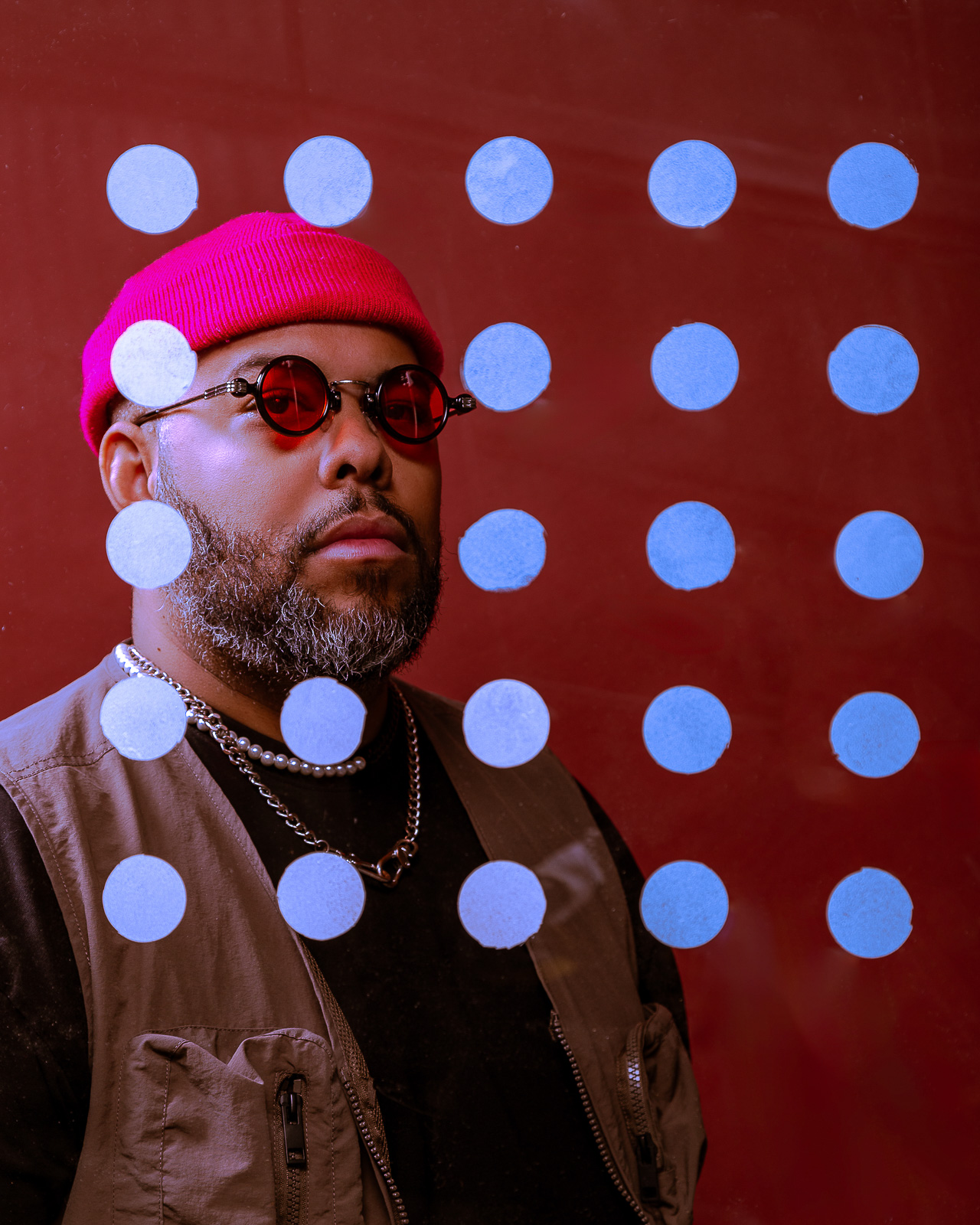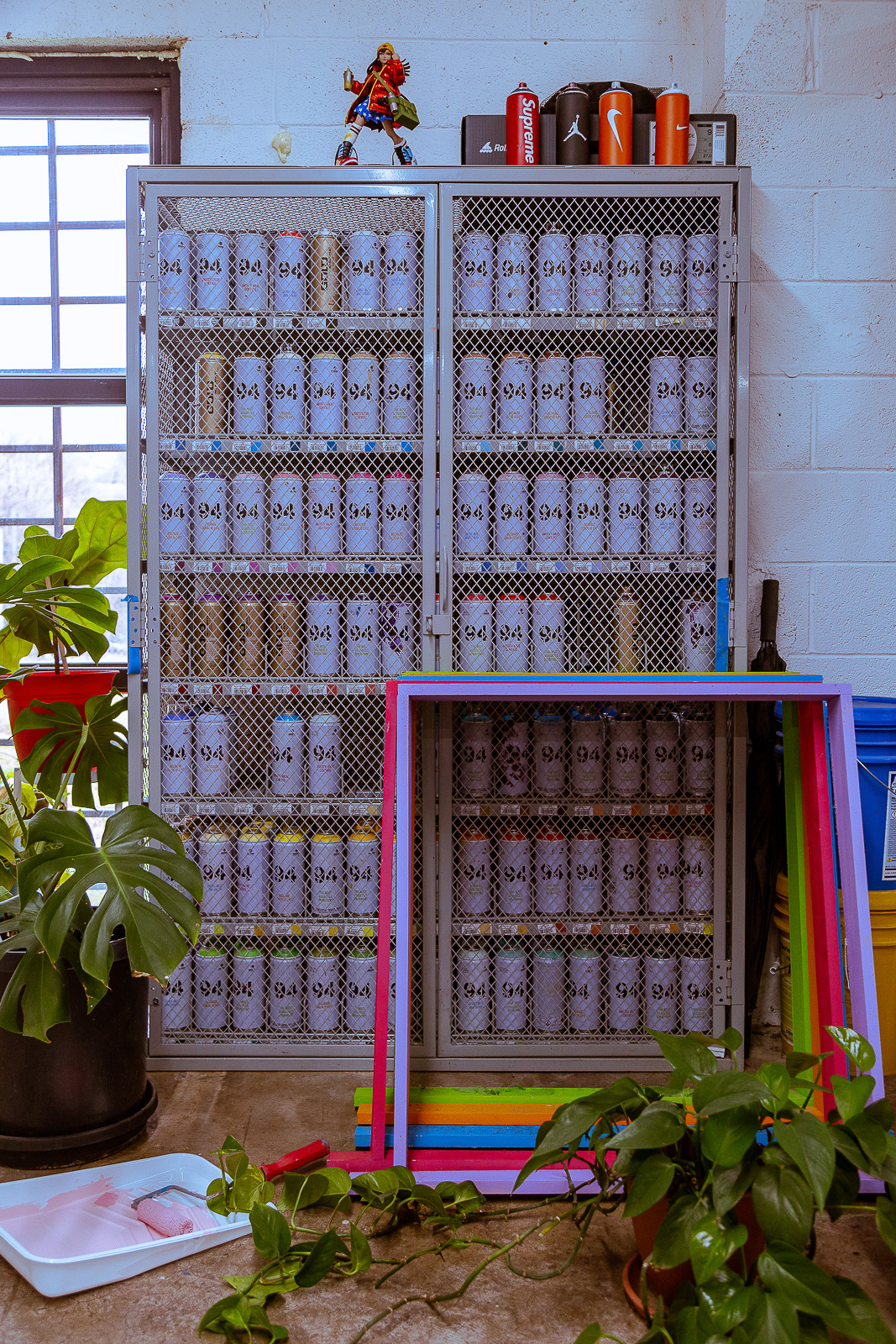
Photography by Yuvie Styles
Even if you don’t realize it, you have seen Jeremy Biggers’ work around Dallas. As an award-winning artist, he’s established himself as a prominent painter and muralist, with artwork around the world and more locally in Deep Ellum, West Dallas and Oak Cliff.
The massive Leon Bridges surrounded by Blues legends that decorates the side of the Patagonia building. That’s a Biggers. Jefferson Boulevard’s belting Selena. That’s a Biggers, too.
But his success didn’t happen overnight.
Growing up in South Dallas, Biggers had a passion for art and taught himself the basics. He loved characters from the Sunday cartoons and comic books, and for a while he emulated the drawings he saw before creating his own characters. His mother was a major supporter of his work, realizing how naturally drawing came to her son.
“My mom cultivated (my passion). She would bring home reams of paper from work and I would draw on all 500 sheets, and just fill up notebook after notebook,” he says. “My mom did her best to try to put me in positions to win.”
Biggers’ mother was a “rockstar” who researched how to get Biggers an audition at Booker T. Washington High School for the Performing and Visual Arts. He didn’t realize it at the time, but her dedication to researching the school’s admission process in the pre-internet days was a “turning point” for his trajectory as an artist.
During the audition process, Biggers was “full of doubt” during the “most nerve wracking thing that (he) had ever done.”
“I’m competing with people that have had art lessons since they were three years old, competing with people that their parents can afford for them to be in the art world at such a young age,” Biggers says. “That first half, I was just like ‘Where do I stack up? Do I belong? Have I made a mistake?’ And the second half I was like ‘Nah, I deserve to be here just like any of these other people.’”
He painted his way into school acceptance, and was able to take his first real art classes.
When college rolled around, Biggers attended Eastfield College before transferring to the University of Texas at Arlington where he studied graphic design.
Biggers outgrew his adolescent aspirations after convincing himself that being an artist wasn’t a viable career to pay bills. He looked for jobs as a graphic designer or animator, but eventually settled on an entry-level role at the Greyhound corporate office downtown. He was left unsatisfied and drained from “typical corporate cubicle life,” and wanted to change paths.
“It was absolutely horrendous. It wasn’t for me at all, but I thought that this was what adults do. You work jobs that you don’t like so that you pay the bills,” Biggers says. “And when [my mother] passed, it was a catalyst for me to be like, ‘Okay, I don’t want to do this with the rest of my life.’”
He attempted to “make it happen” as an artist before bouncing around to a few other jobs. Then, after working as a graphic designer with a job that was going to “put him in an early grave,” Biggers decided he was done. He quit the job in 2011, and has been “full-time art” ever since.
Reflecting on the past 13 years of following his passion, he describes it as an amazing journey.
“I make the work that 12-year-old me wanted to see when I went into these prestigious spaces, whether that be a gallery, whether that be a museum, it’s really important for me to make the art I wish that I saw growing up,” he says.
Biggers says it’s more than art, it’s a way to tell stories from the Black male perspective that has historically been excluded from the art world. Many of his works feature individuals from the Black community who have been a source of inspiration for him; his way of contributing to the “already rich culture” of Black art.
He is past the point of trying to please everyone with his art. Many of his paintings are adorned with dots that are as much of a character as the subjects themselves. The dots are a subtle, but meaningful nod to his “first art fan,” his mother.
In the week between her death and her funeral, ladybugs kept appearing near or on Biggers. It was a sign, so Biggers hid ladybugs in his artwork to pay tribute to his mother.
Eventually, the literal ladybugs turned to dots that can be “any color on any palette.”
“To have her at the forefront of what I’m doing now, like on the front of the pieces, was important because I know she would be super proud. She’d be over the moon,” Biggers says. “A lot of what I do obviously is for my family, my wife and my daughter, but a lot of what I do is also to (honor) all the stuff my mom sacrificed. To make sure she knows I’m not squandering it.”







